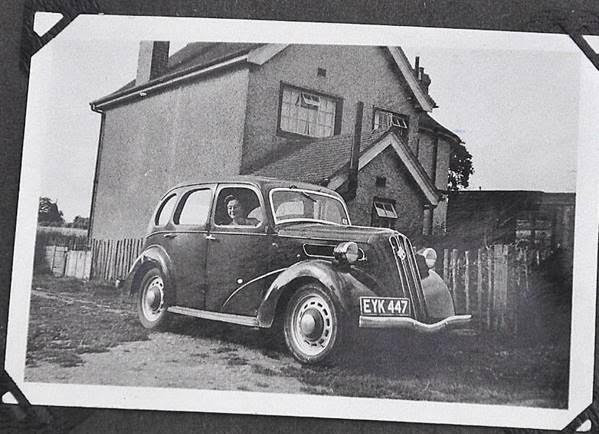Up to the age of 10 my main experience of four wheels was on a tractor – a David Brown with a seat wide enough for two, provided one was a child, spending quality time on the tractor or the trailer behind. We bumped along, often with a trailer of fodder, in some comfort by the standards of the day as most other tractors had a single steel springy seat which was cold to the bum and bounced alarmingly over bumps.
But then the farmer bought one of the earliest grey Ferguson tractors (TE20), a petrol/TVO model, and this was the first vehicle I actually drove, albeit in a limited way. In those days harvest, still mostly involving sheaves of corn, was hard physical work and all hands were needed to load and stack the trailers. I was therefore given the job of “setting up” the tractor and trailer which meant moving it forward between “shocks” of corn, so saving a man. I was no more than 9 or 10 and, despite the small tractor, not really up to the job since I wasn’t able to engage gear properly or push the clutch down unless I stood on it. So I had no choice but to keep the tractor in gear at all times. This meant standing up to hold the clutch down most of the time but then still releasing it carefully to set up. If I jerked at all there was a good chance the stacker would simply fall off the load. The agony of the leg after a few minutes still sits in my memory!
A car in the early fifties was very desirable. Shortages of most things continued long after the war. The idea of having consumer goods, especially a car, was very seductive and captured my parents like so many others. But you couldn’t just go out and buy a car, and if you could get one you paid an inflated price. But mobility was so valued that my parents bought a car with an unexpected windfall; to put this in perspective, the cost of a car would have been enough to meet another aspiration they had and set them up on a small farm. The car was a 1938 Ford Prefect EYK 447 – 1938 the first year of its manufacture. Though old it was in good condition, and had probably been laid up during and after the war. (There was no private petrol allowance for much of the war and even at times after the war, and petrol rationing continued until 1950). I was probably 9 or 10 then but recall the Prefect as quite well made compared with some post-war offerings, though the side valve engine and three gears didn’t propel it along at anything other than a slow pace. But then, when the alternative was a bike or a tractor, plodding along in the Prefect felt like luxury – effortless and protected from the weather and a cut above most people. So we would “go for a run” in the Prefect on a Sunday.
The idea of simply cruising around country lanes with no destination or even route in mind seems bizarre today. But there were 3m cars on the road, not the current 32m, and you met little traffic. We were country people and other people’s farms held a wealth of interest and the countryside still had its hedges, trees, fruit orchards, hop gardens and much more wildlife; Kent was still the Garden of England. And travelling at less than 30 mph allowed even the driver to see quite a bit!


Leave a Reply